Social media is a fantastic tool for connecting with people and spreading your message to a larger audience. Still, when attempting to approach it from a business viewpoint, its complexity might appear overwhelming, especially when managing a variety of platforms with a wide range of content types and themes.
But you don't have to worry because that's where having a content strategy for social media comes in!
In this blog, we'll explain the steps you should take to create a successful content strategy to meet your goals. So read on, and let's get started!
Why should you create a content strategy for social media?
Creating a content strategy is like building a map, not just any map but a detailed roadmap of your journey through the content world. It helps to track progress and keep everything moving in the right direction.
A good content strategy can help you identify what kind of content will be most helpful for reaching your goals, how to develop it sustainably, and how to measure success. It also helps you to schedule your posts effectively, monitor hashtags, focus your efforts where they matter most, and avoid common pitfalls.
What to include in your content plan?
A social media plan is a great way to ensure your brand's presence on social media is consistent and engaging. When creating a content plan - make sure you include the following elements:
- Timing: Determine when and how often you will post on each platform. Consider peak times, holidays, special occasions, etc.
- Content Type: Determine what you plan to share on each platform (i.e., photos, videos, polls, articles). Plan by creating different types of content, such as infographics or GIFs, so that there's something new for followers to engage with every time they check your page.
- Tone & Voice: Establish a consistent tone for your brand. This includes how you communicate, the language used, and the topic shared.
- Goals: Determine what you want from each post (i.e., increased followers, engagement, website clicks). Identify key performance indicators that will help you measure success over time and track progress towards meeting goals.
- Tracking & Analysis: Make sure to track all activities on social media, such as shares, likes, comments, etc., so you can analyze which posts performed better than others and adjust accordingly in the future. Doing this regularly will also allow you to develop insights into your target audience's preferences in terms of topics they engage with.
You can also include other elements like key topics to cover, target audiences, publishing times/dates, and strategies for re-purposing existing content.
Remember that creating a content calendar for your social media channels is essential to any digital marketing strategy, as it helps ensure consistency and engagement among followers.
6 Steps to your social media content plan
Creating a social media content plan isn't as hard as it looks— and you don't need to be an expert! Follow these six steps to get your plan off the ground:
Step 1. Set Goals & Objectives
Setting goals and objectives is essential to ensure your content marketing efforts are successful. After all, how can you assess success if you don't know what you're trying for?
It would be great if you identified your main objective. Some popular objectives might be increasing brand awareness, boosting engagement or generating leads.
Once you have a crystal clear idea of what outcomes you want from your content, try setting specific targets. How many website visits do you want to achieve? How much revenue do you wish to generate from each piece of content? By clearly defining these expectations beforehand, it's easy to measure the success of individual content pieces later on.
Step 2. Use a Social Media Scheduling Tool
Scheduling tools can be a game-changer for those trying to maximize their social media strategy. Using these tools, you can create and schedule posts ahead so that your content always hits the right feeds at the optimal times!
Some popular scheduling tools include:
- Hootsuite
- Buffer
- Sprout Social
- CoSchedule
- SocialBee
Each one offers different features and levels of customization so you can find the perfect fit for your specific needs. Plus, many offer free trials or discounted plans for limited users – so don't miss out on giving them a try!
Step 3. Choose Content Types
When creating your content plan, consider what kind of content you want to post across different platforms. You can focus on visual elements like photos and reels for Instagram, Facebook, and TikTok or go for more in-depth articles for LinkedIn and YouTube.
One of the strategies you can use in creating a content plan is the 80-20 principle, also known as the Pareto Principle.
This principle suggests that 80% of your content should be dedicated to helping your audience learn and engage with informative, entertaining pieces, while 20% of your content should be used to promote your business.
Step 4. Make a Content Calendar
Creating a content calendar is one of the essential steps for planning and curating content for your website or blog. It ensures that you have topics mapped out and scheduled accordingly to stay on top of deadlines and maximize productivity.
When creating your calendar, include each topic's who, what, when, and where. For example, identify who is responsible for creating the content (e.g., writer, editor) along with any relevant due dates. Specify the type of post or video that will be produced, and determine when each piece of content will be published and where the content will be posted (e.g., website, blog, social media, etc.).
Step 5. Measure & Analyze
With social media, staying on top of the ever-changing trends is important. Utilizing tools like post tracking can help you do that and ensure the right people are seeing your posts at the right time.
Post tracking allows you to monitor how many people see your posts, react to them, share them, and more. This information helps you understand what content resonates with your audience and gives you an insight into their preferences so that you can tailor your content accordingly.
This will helps in boosting engagement and provide you with helpful information that you may utilize to improve posts.
Step 6. Revisit & Improve
Tracking your social media content is essential to understanding how effective your strategies are and what needs to be adjusted. There are different metrics you should keep track of to determine the success or failure of your campaigns.
These are some key metrics that can help you accurately measure and monitor your social media performance:
- Reach – It is the number of unique users who have seen any activity related to your account. It includes organic reach (views from people who follow you) and paid reach (views from ads).
- Engagement rate – This metric tracks how many people interacted with your posts by liking, commenting, or sharing them. The higher the engagement rate, the better.
- Followers – Knowing how many followers you have is crucial because it gives you an indication of the size and reach of your audience. The higher the number of followers, the bigger your potential to reach more people.
- Impressions – This tells you how many times any post from your account has been seen in total—even if someone saw it multiple times, it still only counts as one impression.
- Link clicks – By tracking link clicks, you understand what content resonates most with your audience and leads them to take action (e.g., visit a website or make a purchase).
The goal of tracking metrics should be to understand what works and what doesn't when achieving your social media objectives. Taking time to analyze these key metrics can help you set realistic goals and improve both short-term and long-term performance.
Final Word
A content strategy for social media is a vital part of the success of any business. It can help you plan, create and distribute content that resonates with your audience, build relationships and nurture engagement.
By putting in the effort to create a well-thought-out content strategy, you'll be able to take advantage of all the opportunities social media offers. From optimizing your profile pages to crafting compelling posts, following these steps will help you ensure that your message reaches your target audience in the most effective way possible.
Get started today on social media marketing for your business, and start building meaningful connections!
GET STARTED!
Boost your sales and convert leads to clients with our social media services. Claim a free marketing audit for your business (worth $2k) today.

